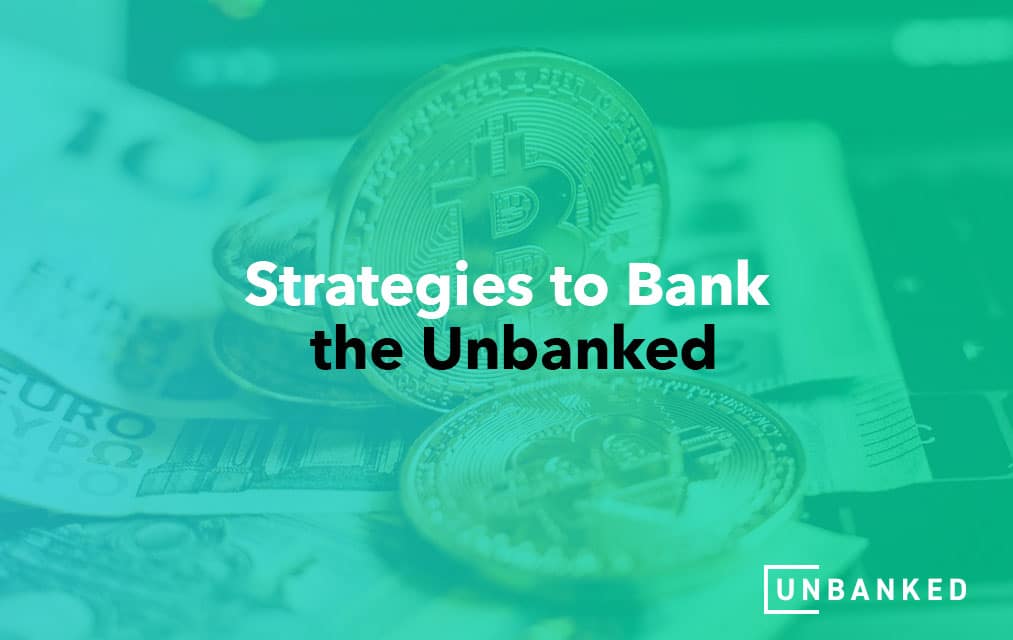For many people in the developed world, opening a bank account is part of growing up. Unfortunately, a significant population of the world population doesn’t have any form of financial services. They also don’t have access to a physical branch to take advantage of banking services. For these individuals, who are under or unbanked means using other forms of financial services. These can range from check-cashing outlets, money orders, or even payday lenders, amongst other less reputable means to handle their money.
While many alternative financial services have similarities to traditional banking, it’s usually at a much higher price point. There are benefits for those who use them. They are much more expensive when compared to a bank. This is one of the many reasons why helping the unbanked get a bank account, use blockchain technologies or invest in cryptocurrencies.
Even today, the number of unbanked people is still relatively high. It has fallen over the years due to newer technologies. Banks and financial institutions are using mobile apps and the internet to help connect them to potential customers in a new way. Also, adding in new fintech like blockchain and crypto, the unbanked world sees more outlets to get lower-cost financial services in the palm of their hand.
Who is the Unbanked Customer?
This is a person who doesn’t have a checking or savings account with any financial institution type. They don’t have access to traditional services like loans or credit cards. They are also more than likely to use alternative financial services. In developing countries, unbanked individuals are too remote to take advantage of opening an account, or the gender divide still prevents them from being able to open an account. Today, around 1.7 billion people in the world are unbanked and unable to get the financial services they need. At the same time, most of these account for developing countries, even developed countries like the U.S. have their fair share.
Strategies to Help the Unbanked
Engaging the unbanked takes time and some extra strategies to encourage someone to open an account or invest in what you want to offer. A significant part is shifting their perspective on what banking is today and what it provides due to today’s technology.
- Eliminate any barriers that can stand in their way. For many in the developed and the developing world, having a bank account or investing in crypto seems out of reach. Some fees can make many of these services are problematic for many people. For some, even the account minimums are challenging if they have lower incomes. It’s essential to get rid of those things that block their way to financial stability to reach these unbanked people. This can range from minimum balances that are needed, direct deposit or other fees that stand in their way.
- Financial institutions can use mobile technology and apps for ease of use. More people use their smartphones than desktop computers. This is especially prevalent in developing countries. It’s more likely for someone to have a smartphone over a traditional computer. Since the majority of the unbanked population has slower incomes, their use of mobile apps will be considerably higher due to broadband costs needed for home computer internet use. They are also more apt to rely on mobile technology for their needs. A mobile app will give people the information they request and full access to their account. It’s also convenient for many who want to invest in their business or crypto using their mobile app over trying to find a computer to log in to. All financial services that are needed can be done through mobile services.
- A financial institution may want to decrease its need for physical branches. While some services may require in-person tasks, the usual banking hours don’t always work for the majority of individuals. The unbanked will more than likely look for alternatives that offer them more convenience. Financial institutions can find ways to verify the identities of their customers. This can be two-step verification or biometrics that will keep their account secure. Plus, all these can be done through a mobile app.
- Offer the unbanked stepping stones to help ease them into services. These can be prepaid products like a prepaid credit card. This can prove quite useful in convincing many unbanked individuals to start using other offered services, especially when they open an account.
- Banks can create education opportunities when it comes to personal finances. Many of the unbanked could possibly have a mistrust of banks. This draws many into blockchain technologies and crypto due to its security and lowers fees because of its inherent digital nature. Educating consumers will help instill trust. These can range from small videos on topics like applying for credit, opening an account, or even saving money. These can be made available through a mobile app.
- Expanding options on loans and credit will also attract the unbanked. Since many of these individuals are invisible when it comes to credit history, it can make it challenging for them to get services like loans or credit in a traditional manner. Financial institutions have options to look at for assessing credit, like paying utilities and rent on time. There are also secured credit cards or personal loans to help the unbanked build the credit they need and trust in their chosen bank.
Reaching the unbanked is an essential step in an economy’s growth. It also gives the person a certain amount of financial freedom as they have more reputable services to take advantage of. These strategies can help reach the unbanked and help them invest in their businesses, stock, crypto, or more. Even though the unbanked population is falling due to newer technologies, there is still more work to do to reach the others that are either more resistant or unable to gain access to the services they need due to lack of education or knowing where to look.





